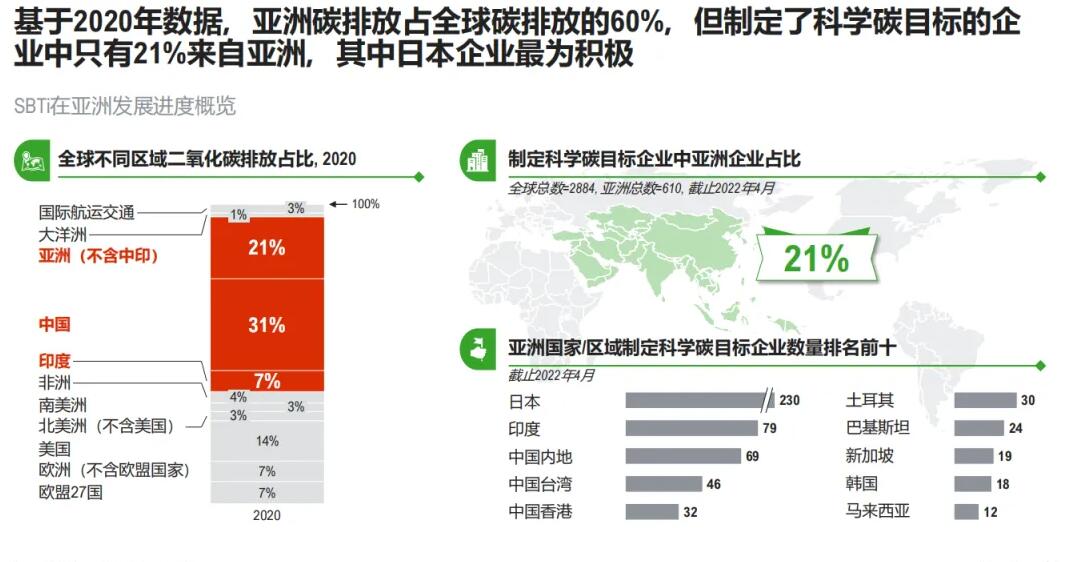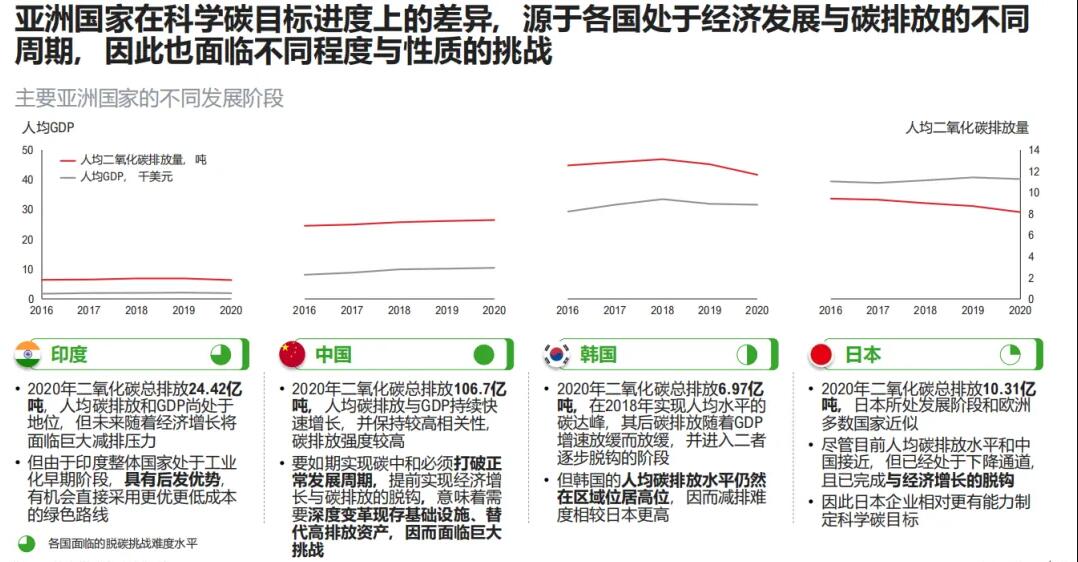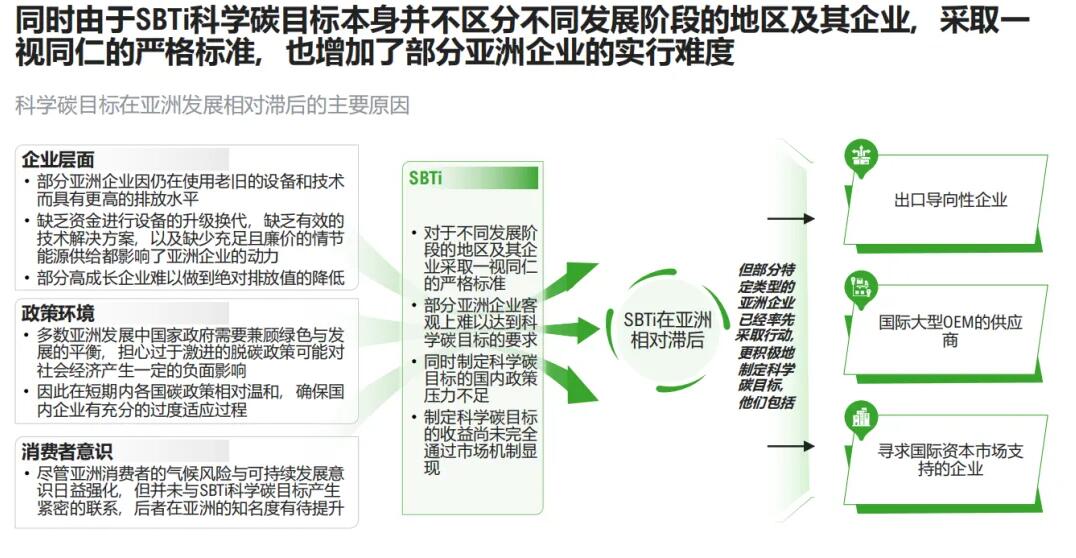Asian countries account for 60 percent of global carbon emissions, but only 21 percent of the world's companies with science-based carbon targets are from Asia. If we compare the total revenue of companies with scientific carbon targets to the country's total GDP, we can see that Japan (52.4%) is far ahead of other Asian countries, approaching or even
Asian countries account for 60 percent of global carbon emissions, but only 21 percent of the world's companies with science-based carbon targets are from Asia. If we compare the total revenue of companies with scientific carbon targets to the country's total GDP, we can see that Japan (52.4%) is far ahead of other Asian countries, approaching or even exceeding the level of some European countries, while China's ratio is only 2.3%. If we look at the proportion of the Top 100 companies in each country with a scientific carbon target, we again find that 40 of the top 100 companies in Japan have joined the SBTi, a level comparable to that of European countries, compared to only seven in China. This reflects that more leading Japanese companies are more ambitious and confident in their own decarbonization goals, while Chinese and South Korean companies need to further improve their attention in this area, and Indian companies are performing better than expected.



The curve characteristics of Japan are similar to those of most European countries, which means that Japan's economic growth has been decoupled from carbon emissions, and it is relatively easy for Japanese companies to set scientific carbon targets. While South Korea has set a national carbon neutral target of 2050 in line with Japan, its stage of development is still far behind Japan. South Korea's per capita carbon emissions are among the highest in the region, and the process of decoupling from economic growth has just begun. China, on the other hand, faces the most difficult challenge. Economic growth and carbon emissions are still highly correlated. If China follows the normal cycle, it will need to go through the South Korean phase, where carbon emissions per capita continue to rise as the economy continues to grow, and then gradually decouple as the economy slows, before entering the Japanese phase. This means that China will produce a huge amount of total emissions in the future, both for our country's “ Double carbon ” Targets and global climate targets would be unsustainable. If China needs to realize the decoupling of economic growth and carbon emissions in advance, it also means that the existing high-emission assets need to be replaced in advance, the existing energy, transportation and other infrastructure, and even the comprehensive changes in the social economy, the difficulty can be imagined. For India, similar to China, its population size and economic growth potential mean that it will face greater pressure to increase carbon emissions in the future, but the difference is that India as a whole is still in the early stage of industrialization, so it has the advantage of late, and has the opportunity to directly choose a more mature and low-cost green route. This partly explains the better-than-expected performance of Indian companies.
On the other hand, the SBTi does not distinguish between regions and their enterprises at different stages of development, which also increases the difficulty of implementation for some Asian enterprises. No matter whether a company comes from developed or developing countries, whether it is a growing company or a mature company, it is necessary to set decarbonization targets based on strict criteria that are equal to each other. For Asian companies that have higher emissions levels because they are still using older equipment and technology, but lack the funds to upgrade their equipment, or lack effective technological solutions, or lack sufficient and cheap clean energy supplies, and thus lack the ability to set more ambitious decarbonisation targets; And some growth enterprises are also difficult to achieve absolute emission reduction while rapidly expanding production and sales according to the requirements of SBTi.
From the perspective of domestic policy environment, most governments of developing Asian countries need to strike a balance between green and development, and worry that overly aggressive decarbonization policies may have a certain negative impact on the social economy. Therefore, national carbon policies are still relatively moderate in the short term, ensuring that domestic enterprises have sufficient transition adaptation process, which also reduces the pressure on Asian enterprises to set scientific carbon targets. At the same time, the visibility and influence of SBTi scientific carbon targets in Asia also need to be improved, so there is not enough driving force for consumers and investors.








 Consultation
Consultation
 400-115-9001
400-115-9001